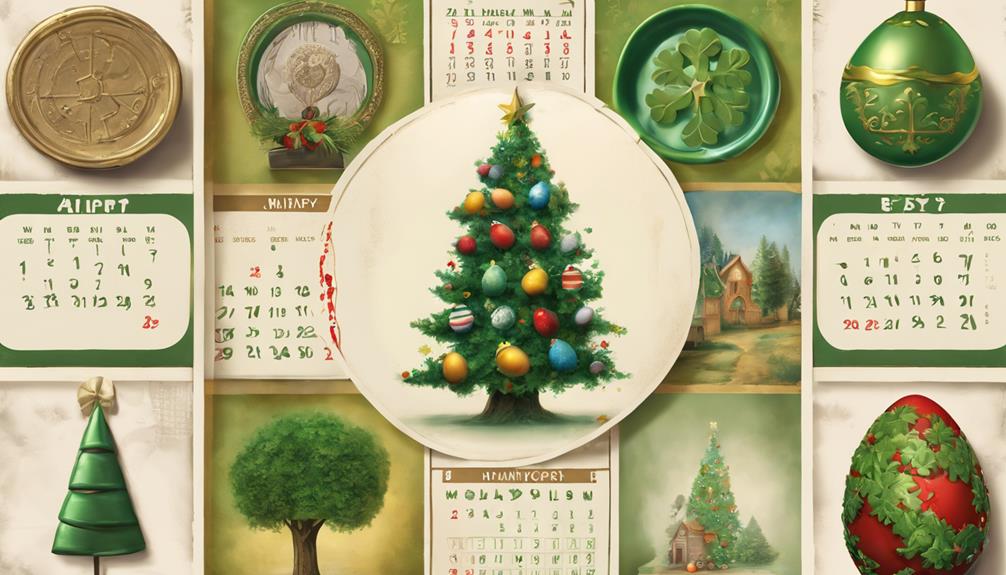The history of popular holidays is a fascinating journey through time, unveiling the intricate tapestry of cultural, religious, and societal influences that have shaped our modern-day celebrations. From the ancient traditions of Hanukkah to the contemporary observance of Lunar New Year, each holiday carries a unique narrative that reflects the values and beliefs of its origin. By exploring the historical evolution of popular holidays like Christmas, New Year's, and Thanksgiving, we gain insight into the complex interplay between tradition, innovation, and commercialization that continues to define our festive landscape. Stay tuned as we unravel the captivating stories behind these beloved holidays and discover the hidden gems of our collective heritage.
Key Takeaways
- Hanukkah commemorates the Temple rededication.
- Kwanzaa celebrates unity and cultural pride.
- Lunar New Year unites families with rich traditions.
- Global New Year customs showcase diverse celebrations.
Origins of Hanukkah
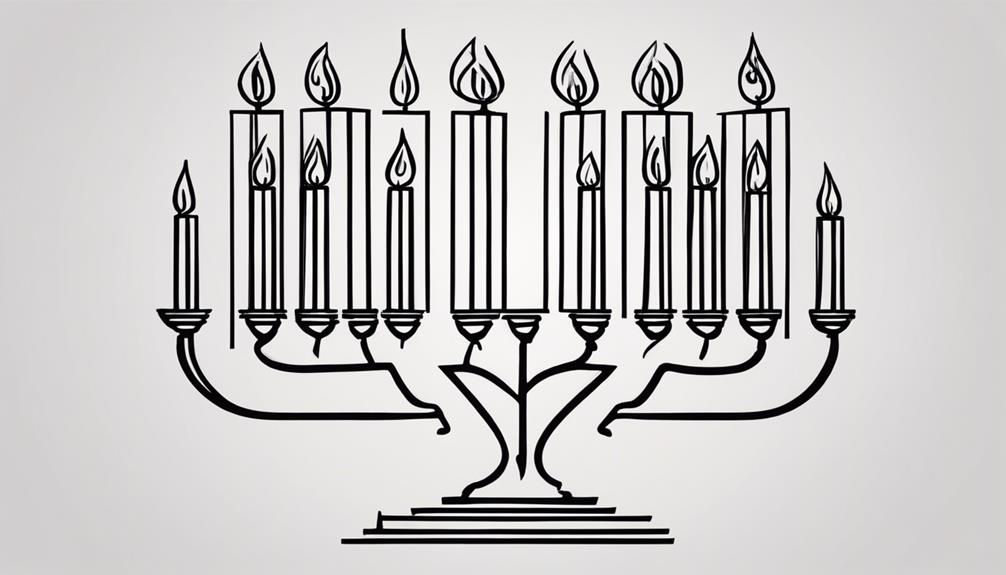
The origins of Hanukkah can be traced back to around 200 B.C. during the reign of Antiochus III. This Jewish holiday commemorates the rededication of the Second Temple in Jerusalem after it was desecrated by the Seleucid Empire. Hanukkah, also known as the Festival of Lights, is celebrated for eight days by lighting the menorah, a nine-branched candelabrum, adding one candle each night. Traditional Hanukkah foods include fried items like latkes and sufganiyot to symbolize the miracle of the oil that burned for eight days instead of one.
Central to the celebration of Hanukkah is the story of the Maccabees, a group of Jewish rebels who defeated the powerful Seleucid army and reclaimed Jerusalem. The victory of the Maccabees is a symbol of Jewish resistance against oppression and the struggle for religious freedom. The miracle of the oil lasting for eight days is a significant aspect of Hanukkah, emphasizing the divine presence and protection over the Jewish people during challenging times.
Kwanzaa: Historical Background
Originating as a celebration rooted in African American culture and heritage, Kwanzaa was established in 1966 by Dr. Maulana Karenga to commemorate principles known as Nguzo Saba. This week-long holiday, observed from December 26 to January 1, serves as an African American Holiday focusing on unity, community, and cultural pride. Dr. Karenga drew inspiration from various African harvest festivals to create Kwanzaa, incorporating rituals like lighting the Kinara (candle holder) and exchanging symbolic gifts such as handmade crafts. Kwanzaa encourages reflection on African traditions, values, and history, emphasizing the importance of unity and empowerment within the African diaspora. By promoting the Nguzo Saba principles of unity, self-determination, collective work and responsibility, cooperative economics, purpose, creativity, and faith, Kwanzaa offers a meaningful opportunity for African American individuals and communities to connect with their heritage and strengthen their cultural identity.
Significance of Lunar New Year 2024
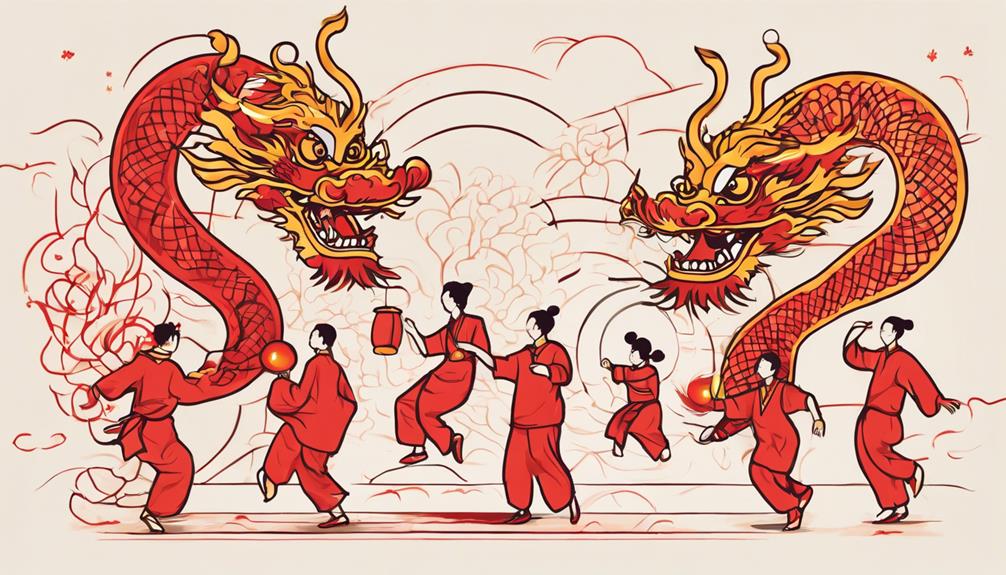
The significance of Lunar New Year 2024 lies in the rich tapestry of traditions and cultural celebrations it encompasses. This annual event serves as a time-honored occasion for families to come together, share festive meals, and pay respects to their ancestors. With each year symbolized by a zodiac animal, the Lunar New Year carries deep-rooted symbolism and practices that reflect the essence of various Asian cultures.
Lunar New Year Traditions
Observing Lunar New Year traditions during the upcoming 2024 celebration offers a unique insight into the cultural significance and symbolic representations tied to the Year of the Dragon in the Chinese zodiac. Chinese New Year, or Lunar New Year, is marked by traditions like dragon dances, red envelopes with money, and family reunions. This significant event signifies the arrival of spring and is embraced by various Asian cultures. Each Lunar New Year corresponds to a specific animal sign from the Chinese zodiac, with 2024 heralding the Year of the Dragon starting on January 24th. The festivities not only bring families together but also showcase the rich heritage and beliefs surrounding the zodiac, fostering a sense of unity and renewal among communities celebrating this auspicious occasion.
Cultural Celebrations
Cultural Celebrations surrounding the upcoming Lunar New Year 2024 highlight the enduring traditions and symbolic practices that signify renewal, family unity, and auspicious beginnings in various Asian communities.
- The Year of the Dragon in the Chinese zodiac commences on January 22, 2024, marking the start of Lunar New Year.
- Red decorations, lion dances, fireworks, and red envelopes with money symbolize good luck and prosperity during the celebrations.
- The Lunar New Year follows the lunar calendar, assigning each year an animal sign in a 12-year cycle.
- Festivities lasting up to 15 days entail special activities each day, signifying hopes for a prosperous year ahead.
New Years Through the Ages
The celebration of New Year's has a rich history that dates back thousands of years, with ancient civilizations like the Babylonians establishing traditions that influenced future customs. Over time, these practices have evolved, leading to the diverse global New Year customs we observe today. Understanding the ancient roots and evolution of New Year celebrations provides insights into the significance and cultural importance of this worldwide event.
Ancient New Year Traditions
Ancient civilizations across the globe established foundational traditions for celebrating the new year, rooted in astronomical observations and cultural significance.
- Babylonian Influence:
- Babylonians initiated New Year celebrations around 4,000 years ago, aligning the new year with the first new moon after the vernal equinox.
- Historical Significance:
- New Year's Eve celebrations have a rich history spanning over 4,000 years, showcasing diverse cultural practices and rituals.
- Astronomical Basis:
- The Babylonian tradition of determining the new year based on celestial events like the vernal equinox shaped the essence of modern New Year celebrations.
- Cultural Evolution:
- Over millennia, various cultures have adapted and evolved New Year traditions, incorporating unique customs that reflect the importance of new beginnings and the cyclical nature of time.
Evolution of Celebrations
The evolution of New Year celebrations through history highlights the enduring significance of marking the passage of time and the renewal of the annual cycle across diverse cultures globally. New Year's Eve festivities have a rich history, originating over 4,000 years ago in ancient Babylon. The Babylonians tied the new year to the first new moon after the vernal equinox, setting a precedent for future celebrations. Over time, New Year's Eve customs have evolved with cultural influences, leading to a myriad of unique traditions worldwide. Different societies have developed their distinct ways to commemorate the transition to a new year, showcasing the universal importance of acknowledging the cyclical nature of time.
| Evolution of New Year Celebrations |
|---|
| Ancient Babylonians marked the new year based on the first new moon after the vernal equinox. |
| New Year's Eve celebrations have evolved over time with various cultural influences and traditions. |
| Different cultures globally have developed unique customs and rituals to mark the passage of time and the beginning of a new year. |
Global New Year Customs
During the course of history, global New Year customs have served as a testament to the diverse and intricate ways in which societies worldwide commemorate the transition to a new year.
- Ancient Babylonians, over 4,000 years ago, celebrated the new year based on the first new moon after the vernal equinox.
- Lunar New Year festivities incorporate the symbolism of 12 zodiac animals, such as the rat and ox.
- Traditions like the iconic New Year's Eve ball drop have origins predating the famous Times Square event.
- Various cultures embrace unique customs and rituals to usher in the New Year, showcasing the richness of global celebrations.
Latin American Holiday Traditions
Latin American Holiday Traditions showcase a vibrant tapestry of cultural celebrations blending indigenous, European, and African influences. These traditions feature vibrant Nativity and New Year celebrations with deep cultural significance. Festive music, dance, and storytelling play integral roles in Latin American holiday festivities, reflecting the rich cultural heritage of the region. Throughout these holidays, a fusion of indigenous, European, and African elements can be observed, highlighting the diverse roots of Latin American culture.
Traditional foods are a key component of Latin American holiday traditions, with dishes like tamales, empanadas, and panettone being commonly enjoyed during these festive times. These culinary delights not only tantalize the taste buds but also hold symbolic meanings within the context of the celebrations. More than just events for merrymaking, Latin American holiday celebrations emphasize the values of family, community, and spirituality, creating a unique and enriching cultural experience for all participants.
Lucky New Years Food Customs
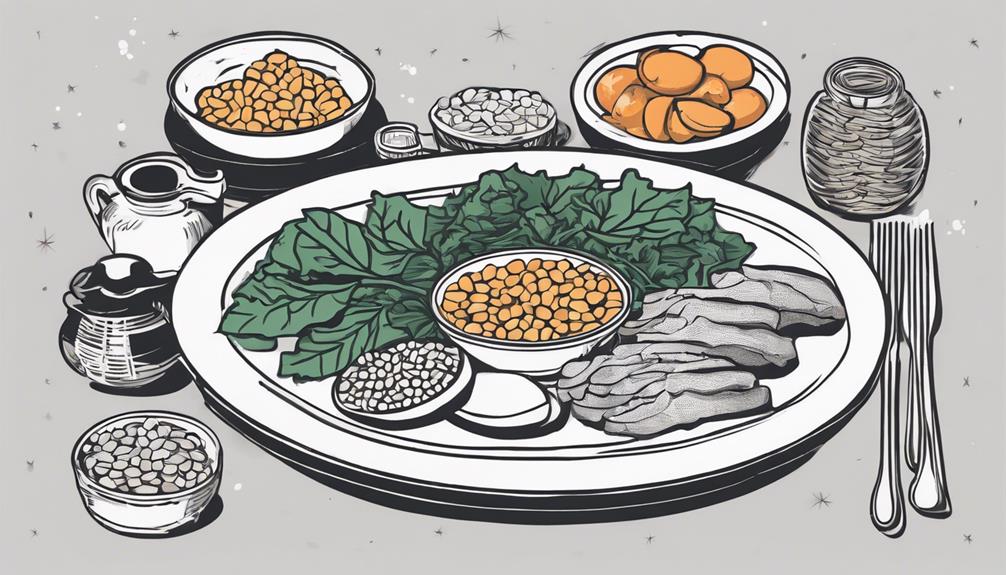
Lucky New Years food customs around the world encompass a variety of symbolic dishes believed to bring prosperity and good fortune in the upcoming year.
4 Lucky New Years Food Customs:
- Black-Eyed Peas: In the Southern United States, consuming black-eyed peas on New Year's Day is thought to bring good luck and prosperity.
- Lentils: Italy celebrates New Year's with lentils, symbolizing wealth and prosperity due to their resemblance to coins.
- 12 Grapes**: Spaniards eat 12 grapes at midnight on New Year's Eve, with each grape representing good luck for a month in the new year.
- Pork**: Many cultures, such as Germany and Austria, consider pork a lucky New Year's food, symbolizing progress and prosperity.
These customs reflect the universal desire for a positive start to the New Year. The choice of specific foods often ties back to cultural beliefs and traditions, with each dish carrying symbolic significance. Whether it's the humble black-eyed peas in the Southern U.S. or the elaborate 12 grapes in Spain, these culinary practices add a layer of meaning to the transition into a new year.
Winter Solstice Celebrations Worldwide
Winter Solstice celebrations worldwide encompass a diverse array of cultural traditions and customs. These festivities symbolize the cyclical nature of the seasons and the triumph of light over darkness. Modern Winter Solstice festivals continue to bring communities together in joyful observance of this celestial event.
Global Winter Solstice
The global celebration of the Winter Solstice encompasses diverse cultural expressions that honor the astronomical event marking the return of the sun after the longest night of the year.
- Winter Solstice celebrations worldwide honor the rebirth of light and the promise of longer days.
- Various cultures mark this event with festivals, rituals, and gatherings to welcome the increasing daylight.
- Traditional customs such as lighting candles, bonfires, and decorating with evergreens symbolize renewal and hope.
- In ancient times, the Winter Solstice held significant agricultural and celestial importance, signifying a turning point in the natural cycle.
These celebrations highlight themes of rebirth, transformation, and the triumph of light over darkness, resonating across cultures and traditions globally.
Cultural Traditions and Customs
Cultural observances and practices during the Winter Solstice span a rich tapestry of global traditions that reflect the significance of this astronomical event in various societies. Winter Solstice celebrations worldwide are rooted in honoring the return of the sun and the changing of seasons. Different cultures have unique holiday traditions to mark this event. For example, in Scandinavia, the Yule festival signifies the rebirth of the sun through bonfires and feasting. The Chinese Dongzhi Festival emphasizes family reunions and the consumption of tangyuan to symbolize unity. Native American tribes like the Hopi engage in ceremonies focusing on renewal and balance during the Winter Solstice. These diverse customs highlight the universal themes of light, warmth, and renewal that characterize holiday traditions around the world.
Modern Winter Festivals
Across diverse societies globally, contemporary winter festivals have evolved to reflect modern interpretations of the age-old celebration of the Winter Solstice.
- Global Observance: Winter solstice celebrations worldwide honor the return of the sun after the longest night of the year.
- Ancient Roots: These celebrations date back to ancient times and are observed in various cultures and traditions.
- Cultural Diversity: Different countries mark the winter solstice with unique customs, rituals, and festivals.
- Symbolism: Winter solstice festivals symbolize hope, renewal, and the triumph of light over darkness.
During the winter solstice, individuals and communities engage in rituals and festivities that highlight themes of reflection, gratitude, and anticipation for the future. These events serve as reminders of the cyclical nature of life and the enduring human spirit in the face of darkness.
Historical Events on Christmas Day
On Christmas Day throughout history, significant events have unfolded, shaping the course of wars and space exploration. The signing of the Treaty of Ghent in 1814, ending the War of 1812, stands out as a momentous occasion in Christmas Day history. Additionally, in 1776, George Washington's crossing of the Delaware River played a crucial role in the Revolutionary War, highlighting the strategic importance of this date. The Christmas Truce of 1914 is another remarkable event, where opposing troops in World War I declared temporary ceasefires, emphasizing the human side of conflict during the holiday season.
Moreover, Christmas Day in 1968 marked a milestone in space exploration when Apollo 8 achieved a lunar orbit, paving the way for future manned missions to the moon. The Battle of Trenton, also occurring on Christmas Day in 1776, was a turning point in the American Revolution, underscoring the significance of this festive day in shaping historical outcomes.
Evolution of Christmas Lights

The advent of Christmas lights, pioneered by Thomas Edison, marked a significant technological advancement in holiday decor, revolutionizing traditional lighting methods and enhancing festive celebrations worldwide. Edison's invention of electric Christmas lights replaced risky candles, providing a safer and more efficient way to illuminate homes and streets during the holiday season. The evolution of Christmas lights has been remarkable, shaping the way we celebrate Christmas today.
Key Points:
- Invention: Christmas lights were invented by Thomas Edison, illuminating the holiday season with their brilliance.
- First Display: The first public display of Christmas lights was in 1880 at Edison's Menlo Park laboratory.
- Popularity: Edison's invention quickly gained popularity, spreading joy and festivity during the holiday season.
- Tradition: The tradition of decorating with Christmas lights has evolved over the years, becoming a beloved holiday tradition worldwide.
The tradition of adorning Christmas trees and homes with colorful lights has become an integral part of the holiday spirit, symbolizing joy, hope, and the warmth of the season.
History of New Years Eve
The historical evolution of New Years Eve traces back over 4,000 years, revealing ancient traditions rooted in the marking of time and the anticipation of a new year ahead. Among the earliest known celebrations of New Years Eve were those of the ancient Babylonians, who determined the start of the new year based on the first new moon after the vernal equinox. Over time, various cultures have developed unique customs and rituals to commemorate this occasion, reflecting the passage of time and the hope associated with a fresh start.
New Years Eve holds significant cultural and traditional importance worldwide, transcending geographical boundaries. The festivities surrounding this day vary greatly, ranging from elaborate fireworks displays to intimate gatherings with loved ones. Despite the diversity in how New Years Eve is celebrated, the underlying theme remains constant: bidding farewell to the past year and welcoming the opportunities that the new year brings. This global holiday serves as a time for reflection, celebration, and setting intentions for the future.
Nutcrackers: A Holiday Symbol
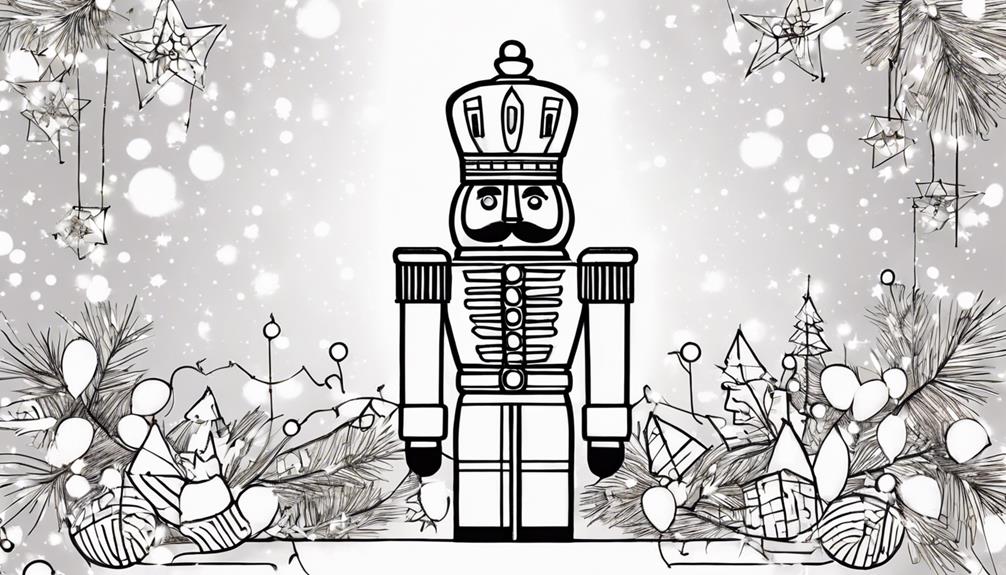
How do nutcrackers serve as symbolic representations of holiday traditions and cultural significance? Nutcrackers have evolved from practical kitchen tools to iconic holiday symbols with deep-rooted meanings. Here are four key points to consider:
- Historical Origin: Nutcrackers originated in Germany during the late 17th century as decorative figurines used primarily for cracking nuts. Over time, they transitioned into cherished holiday decorations.
- Association with Christmas: Nutcrackers have become strongly associated with Christmas traditions, often adorning homes during the festive season. Their presence signifies good luck and protection for the household.
- Symbolic Designs: Typically crafted in the likeness of soldiers or kings, nutcrackers carry symbolism beyond their functionality. These designs reflect themes of strength, power, and tradition.
- Cultural Impact: Tchaikovsky's ballet, 'The Nutcracker,' played a significant role in solidifying the nutcracker's status as a holiday icon. Today, collecting and displaying nutcrackers has become a beloved holiday tradition worldwide, showcasing their enduring cultural significance.
New Years Eve Ball Drop History
Nutcrackers, steeped in holiday symbolism and cultural significance, yield to the historical narrative of the New Years Eve Ball Drop tradition, a pivotal event tracing back to 1907 in Times Square, New York City. The tradition of the Ball Drop has become synonymous with bidding farewell to the old year and welcoming the new one. The first Ball used was constructed of iron and wood, adorned with 100 light bulbs. Over the years, the design has evolved, and the current Ball, weighing nearly 12,000 pounds and embellished with over 32,000 LED lights, is a testament to technological advancements.
To provide a visual comparison of the evolution of the New Years Eve Ball, the table below outlines key details:
| Year | Material | Lights |
|---|---|---|
| 1907 | Iron and Wood | 100 bulbs |
| Now | Steel and LEDs | 32,000+ LEDs |
The inspiration behind the Ball Drop tradition stems from time balls that sailors used to calibrate their instruments. Today, this event in Times Square attracts over a million spectators annually, symbolizing hope, renewal, and unity as the Ball descends at midnight on New Year's Eve.
First Muslim Holiday U.S. Stamp
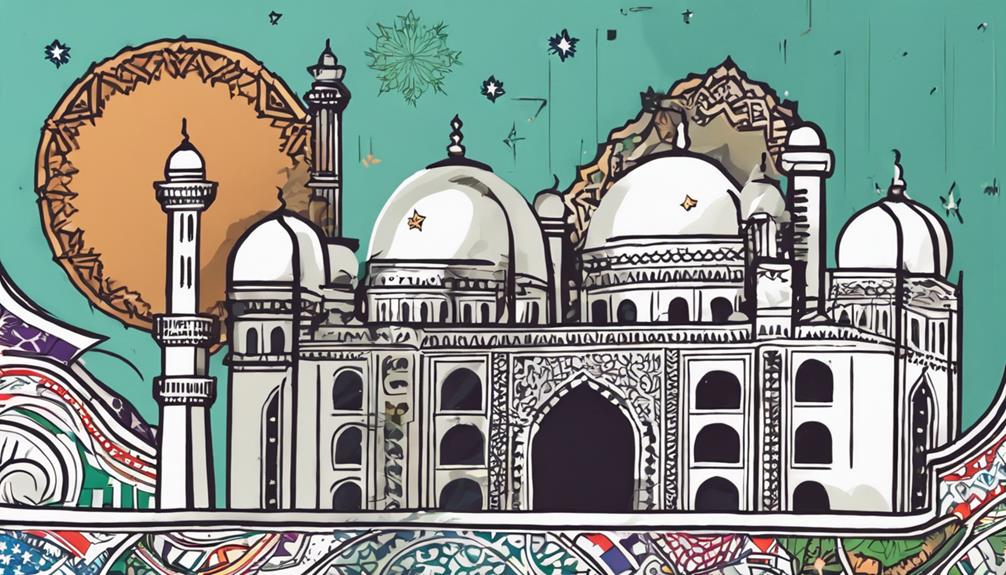
Issued in 2001, the first Muslim holiday U.S. postage stamp commemorated Eid al-Fitr, signifying a significant acknowledgment of Islamic culture within the United States. This stamp holds historical and cultural importance, reflecting the growing recognition of diverse religious traditions in the U.S. The following points highlight the significance of this stamp:
- Cultural Recognition: The issuance of the Eid al-Fitr stamp marked a milestone in acknowledging the presence and contributions of the Muslim community in American society.
- Inclusivity: By featuring a Muslim holiday, the U.S. Postal Service demonstrated inclusivity and respect for the religious practices of all Americans.
- Diversity Celebration: The stamp not only celebrated Eid al-Fitr but also showcased the rich tapestry of religious diversity that exists in the United States.
- Symbol of Unity: This stamp served as a symbol of unity, fostering a sense of harmony and understanding among people of different faith backgrounds.
Frequently Asked Questions
What Are the Origins of Holidays?
Holiday evolution encompasses a complex tapestry of cultural, historical, and religious influences that have shaped the origins of various celebrations. These festivities often stem from ancient rituals, seasonal changes, or significant events in history. As societies evolve, holidays adapt, incorporating new traditions while preserving their core essence. Understanding the origins of holidays provides insight into the values, beliefs, and practices that have been passed down through generations, enriching our cultural tapestry.
What Was the First Holiday in History?
Holiday evolution traces back millennia, with the ancient Babylonians believed to have marked the first holiday, New Year's Day. This celebration, tied to the cycles of nature, symbolized renewal and new beginnings. Over time, civilizations worldwide embraced the concept, shaping various customs and traditions to commemorate significant milestones. The history of the first holiday highlights humanity's enduring desire for fresh starts and the acknowledgment of time's passage.
Who Came up With the Holidays?
Holiday origins can be traced back to various historical, cultural, and religious figures. For example, Hanukkah was established to celebrate the rededication of the Second Temple, while Kwanzaa was created by Dr. Maulana Karenga to honor African heritage. The Chinese Zodiac animals have a history dating over 2,000 years. Understanding the origins of these holidays involves exploring the contexts in which they were conceived and the significance they hold for different communities.
What Is the First Most Popular Holiday?
One of the most widely celebrated holidays globally is Christmas. This holiday is synonymous with various traditions, including gift-giving, decorating Christmas trees, and festive gatherings. Originating as a Christian holiday to honor the birth of Jesus Christ, Christmas has evolved beyond its religious significance to become a secular celebration embraced by diverse cultures worldwide. The enduring popularity of Christmas lies in its ability to bring people together in joyous celebration of shared traditions.
Conclusion
In conclusion, the history of popular holidays is a fascinating and complex tapestry of cultural, religious, and historical influences. By exploring the origins and significance of holidays like Hanukkah, Kwanzaa, Lunar New Year, and New Year's, we gain a deeper understanding of the traditions that shape our social fabric. The evolution of holiday celebrations over time reflects the dynamic interplay of tradition, innovation, and societal change. Exploring these holiday histories reveals the rich tapestry of human experience and cultural identity.
